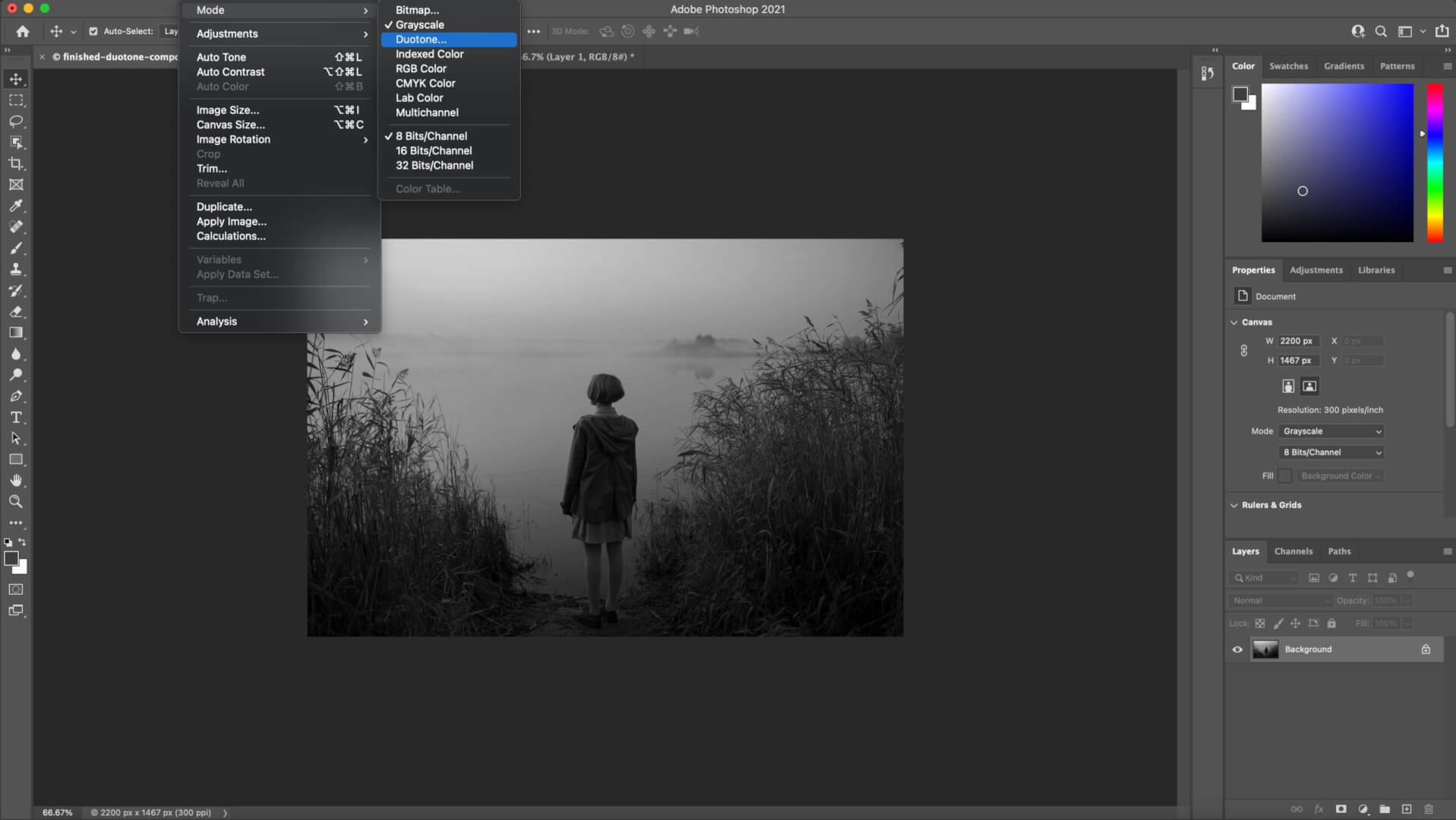Visual art is a constantly evolving journey where creators try to find the next big style that’s going to grab people’s attention. You get fads that come and go, and there’s the occasional snobbishness too. When colour photography first burst on to the scene, many derided it as unfit for the world of art – it was considered a gimmick. Now look where we are.
Colour is often the first thing people remark on about an image nowadays. But it can often be a distraction and override the importance of composition which arguably plays a larger role in visual communication.
With the use of duotones, you could get the best of both worlds; a well-composed image coupled with the sparkle of colour. And they’re actually really easy to make. We’ll show you how in this quick tutorial.
What is a duotone image?
A duotone image is simply an image that employs the use of two key colours. They’re quite similar to mono images in a way but instead of black and white, they’re more colourful and effervescent. This is why they make great images because you get the clear visual messaging of mono, but the eye-pleasing appeal of colour.
As always in Photoshop, there are multiple ways of doing the same thing. We’re going to show you two ways. Firstly, you can use Photoshop’s default duotone tool which is very quick and easy but doesn’t quite give you the control you always need. Then we’ll show you how to do the same thing using gradient maps.
Easy way first.
How to make your own duotone image using Photoshop’s default tool?
Step 1: Find your image
You should treat your duotone like a mono image. So don’t use anything too busy and focus on images with a well-balanced composition and good contrast throughout.
Step 2: Convert your image to 8-bit grayscale mode
Please ensure it is in 8-bit otherwise it won’t work. It should automatically use 8-bit, but you can check in the highlighted area below. You can find this under Image > Mode >Grayscale.
Step 3: Now convert to duotone
This is Photoshop’s default duotone tool and it’s super easy to use. Find it under Image > Mode > Duotone. You can use Adobe’s pre-made colour combinations, of which there are many.
To make your own, just select the colour in the right-hand box and adjust using the curves tool in the left-hand box. Some combinations work better than others so it’s just a case of experimenting and finding something that’s visually well balanced. It doesn’t have to be a duotone either, you’ve got options to make a tritone or quadtone too.
That’s all there is to it with this method. Just don’t forget to save your preset if you find a combination that you’d like to use again. This will help build visual coherency across your work.
How to make your own duotone image using gradient maps?
Step 1: Find your image and apply a gradient map
In this method, instead of applying a colour mode, you’re going to apply a gradient map. You can find this under Image > Adjustments > Gradient Map.
Step 2: Choose your colours and adjust accordingly
Here you can choose your colours, adjust how your gradient transitions, and add extra colours if you want. As with the previous method, have a play around until you find something to suit your needs. It’s always a good idea to incorporate complementary colour combinations.
The great thing with this method compared to the previous is that you have greater control over how the gradient transitions across the page so you can more carefully decide where and how the colour flows across the image.
In this example, we used purple in the shadows and this pastel-y yellow in the highlights. This is a classic complementary colour combination while the hues carry a slight vintage vibe. You should always pay close attention to your highlights though as that’s where you’re most likely to lose detail if you make it much lighter than the original.
And that’s it really. Duotones are super easy to make and highly adjustable for individual tastes. Not only do they add a new dimension to the images you use but it can also help you create a coherent and consistent brand or campaign.
Create your own duotone image with one of these hand-picked images





